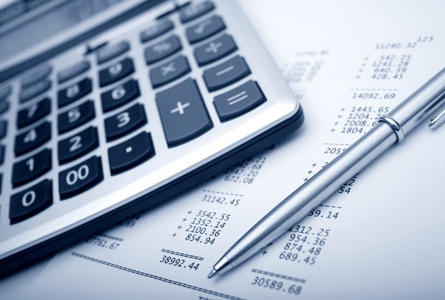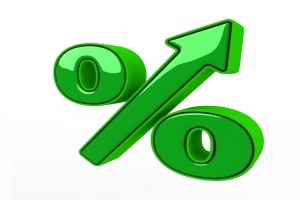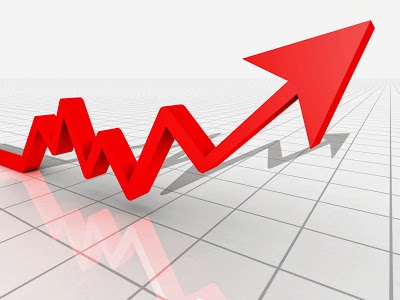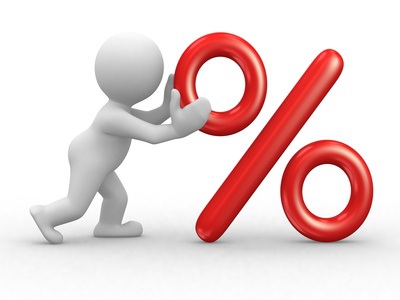The Russian tax system is represented by a fairly wide variety of schemes, under which taxes to the treasury are calculated. Which of them is more profitable for entrepreneurs to use and why? What are the features of each of the systems proposed by the state for calculating fees?
Basic taxation systems
What types of taxation are provided for in Russian law? At the moment, there are four main, most frequently used by enterprises of the Russian Federation. Consider them.
- General System (OSNO). In accordance with it, the individual entrepreneur or organization pays income tax in the amount of 20% of the actual cash receipts to the accounts of the company and to the cash desk from counterparties. Regarding activities in a number of industries, a reduced rate of 10% applies.
- Simplified system taxation. Types of taxes within it - 6% or 15%. In the first case, the basis for calculating fees to the treasury is the company's revenue. In the second - as such profit (the difference between income and expenses).
- Single tax on imputed income or UTII. It implies the payment of fixed fees, the amount of which depends on the industry specifics of the business, is regulated by federal, local and municipal legislation.
- Patent System. This is another simplified type of taxation (when compared with the burden on fees, typical for DOS). It is somewhat similar to UTII, since the tax is paid in relation to fixed amounts determined by law. However, not all activities are compatible with the patent system.

As a rule, the payment of fees by entrepreneurs in the framework of 2, 3 and 4 modes provides less tax burden than with the basic. However, in the case of UTII and when using the STS, there are restrictive criteria. Not all enterprises have the right to work within the framework of these systems. As a rule, this is due to the characteristics of the type of activity or to the value of revenue.
How many taxes - so many reports
All of the above types of taxation can be applied by both IP and business companies, except for the patent system (IP only). It is acceptable that an entrepreneur or organization, by virtue of engaging in different types of activities, will work in different formats at the same time. For example, this is possible if a person opened a computer store combined with a PC repair shop. In the first type of activity, he can use the simplified tax system, in the second - UTII (provided that the characteristics of the business allow this to be done).
Another feature - reporting for each tax system must be submitted separately. The same is true for payments to the budget, which must be made within the time period stipulated for each type of fee.

Next, we will study the types of taxation we have noted in more detail. Consider the specifics of each of them.
There is also another tax applied in Russia - the unified agricultural tax (USHN).
However, his industry specialization is very narrow. Of course, we will consider it in the article, but immediately note that only farmers can use it.
STS
If you try to compare all existing types of tax systems in Russia, then the simplified tax system is perhaps the simplest and most understandable in its structure. Unlike UTII, there is no need to find coefficients with it, re-reading regional laws.
The only thing the entrepreneur has to decide on is choosing the USN at a rate of 6% or 15%. What is the difference, we briefly noted above: in the first case, the tax base is revenue, in the second - profit.However, it is worth noting that in some regions, for certain types of entrepreneurial activity, the profit rate is much lower - 5%.
Choosing a simplified tax system based on revenue may be appropriate if the company does not have a lot of expenses. As a rule, these are companies that provide some services: consulting or, for example, repair. In turn, the simplified tax system, where profit is the basis for calculating fees to the treasury, is most suitable for retail organizations that spend money on purchasing goods from suppliers.

USN is not for everyone
However, not every company has the right to use the simplified tax system. The following types of businesses cannot switch to this system:
- firms that have branches or representative offices;
- microfinance organizations;
- financial institutions;
- funds with non-state capital;
- notaries;
- firms with fixed assets in excess of 100 million rubles;
- companies whose revenue for the calendar year amounted to more than 64 million rubles;
- organizations in which the average number of employees is 100 or more people.
UTII
We will begin to study in detail the types of taxation for individual entrepreneurs and organizations with UTII. The first thing that needs to be done for an entrepreneur who has chosen this mode of charging fees is to register at the Federal Tax Service. Moreover, it is in the territorial unit where the business will be conducted.
In the case of UTII, the amount of tax does not depend on the actual revenue of the organization. The amount of the fee is determined by law. Based on what formulas? Calculation of UTII is based on four indicators. We will study them.
Coefficients of Odds
- Basic profitability. This indicator implies that such and such an object (store, salon) will bring some expected revenue. Which, however, will add up based on the individual parts of the business generating revenue. UTII - rather complicated taxation. By types of activities, the nature of parts of a business can vary greatly. How?
- For example, for full-size retail, a single block is 1 sq. Km. m square. Now the value of the basic yield is the same for the whole of Russia - 1800 rubles. If, for example, a small outlet (within 5 sq. M) is used, then the indicator is 4500 rubles. (why more - we'll see later). For the service industry, this is revenue generated by employees. In this case, the basic yield is 7500 rubles.
- Physical indicator. This component of the UTII formula depends on the total number of square meters in the store, as well as on the number of employees of the service company. If the specifics of the retail outlet assumes that the sales area is very small (no more than 5 sq. M), then the physical indicator is also calculated based on the number of employees. In this case, sellers. And if the trade is conducted in a vending format, then based on the number of machines.
- Coefficient K1. Defined by federal law. For 2014, it is equal to 1,672.
- K2 coefficient. It is determined by regional and municipal legislation. In neighboring subjects of the federation may differ several times. You should always look at local laws.

How is UTII calculated? Very simple. All 4 indicators are multiplied among themselves. The result is a monthly value. Since UTII is paid once a quarter, we multiply the resulting figure by 3. It is in this amount that the payment will need to be made to the Federal Tax Service.
Patent tax
Types of taxation for individual entrepreneurs (but not legal entities) also include the patent system. This format of fees to the treasury is quite new. He appeared in 2013.
There is a version, and it is quite plausible that, through a patent, the state decided to simplify the taxation of certain types of activities that do not meet UTII criteria, which is very desirable for many entrepreneurs. A little later we will understand why.
What, if we consider patent taxation, do activities fall under it? There are a lot of them - a few dozen.Basically, these are various kinds of services: repair, transportation, installation of windows, etc. There are production areas: sewing clothes, making shoes, carpets.
Validity of a patent is from 1 to 12 months. An entrepreneur working under this system may attract hired specialists, but no more than 15 people for one tax period.
The formula for calculating fees for the treasury when using a patent is very simple. It is based on estimated income (as with UTII) that an entrepreneur can receive in a year. Similar to how this happens when applying UTII, tax rates are determined at the level of constituent entities of the federation.
Installment deal with the state
A distinctive specificity of a patent is its purchase from the state (other types of taxation systems are based on the deduction of fees to the treasury according to actual income or according to the terms in relation to periods) for the period that the entrepreneur needs.
The transaction is carried out by installments. If the patent has a validity period of up to six months, then the entrepreneur must pay within 25 days, starting from when the document was received. If more than six months - then by the 25th day 1/3 of the amount is paid, and the balance - within 30 days after the end of the tax period.
Unified agricultural tax
Consider also a single agricultural tax. Our state guarantees agrarians quite preferential taxation. The types of taxes that we examined above are not always comparable in terms of benefits with preferences under the UST.
As we said, there is only one scope of economic activity, in which the USCH applies. It can only be used by entrepreneurs engaged in agriculture. A mandatory criterion is the release of appropriate products on their own, not resale. In addition to private entrepreneurs and business entities, agricultural cooperatives as well as fish-farming organizations can also apply to the Union.

The main criterion for the transition to the USCH is that the revenue from the sale of our own products is at least 70% of the total income. Moreover, the maximum number of employees is 300 people.
If the farmer decides to switch to the Unified Agricultural Taxes, then he is guaranteed the following basic preferences:
- no need to pay personal income tax and VAT (if we are not talking about importing goods);
- the organization is exempt from paying property taxes;
- no need to pay income tax.
Preferences for farmers
The most important preference is the low tax rate. It is only 6%. The base at the same time, as in the case of one of the forms of the simplified tax system, is the company's profit (income minus expenses). Both that and another can be expressed also in the form of natural products, but with obligatory conversion into the financial equivalent. The tax base is formed on an accrual basis.
If the farmer works at a loss, then it can be included in the deduction. That is, the basis for calculating fees in the next billing period is reduced. Losses can be summarized for the previous year. True, you can reduce it not infinitely. The maximum deduction is 30%. However, the balance of unused losses can be carried forward to the following periods.
How to choose the best system?

What type of taxation to choose, despite the fact that the difference between them is very significant?
The most important criterion is, of course, financial gain.
As a rule, novice entrepreneurs choose between STS and UTII (ceteris paribus and with the same compatibility of activities with the law).
Let's try to make some calculations. Let's say our business is selling chocolate bars using vending machines. We, according to the law, have the right to use the USN or UTII. Suppose the revenue generated by the device per month is 300 thousand rubles. We agree that the loss is minimal, and therefore we use the option of charging fees when 6% of income is paid.
UTII - more profitable?
Thus, we give the state monthly 18 thousand rubles. at the simplified tax system But maybe it’s more profitable to choose a different taxation option - UTII? It all depends on which city we work in. Let's say in Tula.We go to the regional website of the Federal Tax Service and download the corresponding municipal law, which determines the coefficients for UTII. It turns out the following:
- coefficient K1 (federal) - 1,672;
- base: 4500 rub. (for trading using automatic machines);
- K2 coefficient for Tula (retail: other goods) - 0.79;
- physical indicator - 1 (one vending machine).
So, we consider the quarterly UTII, we multiply all the values. It turns out 5943 rubles. 96 kopecks You can round to 5944 rubles. For the year, 71,328 rubles come out. It turns out that UTII is 3 times more profitable.
Such calculations are very useful for enterprises using types of taxation that are alternative to the general system.








